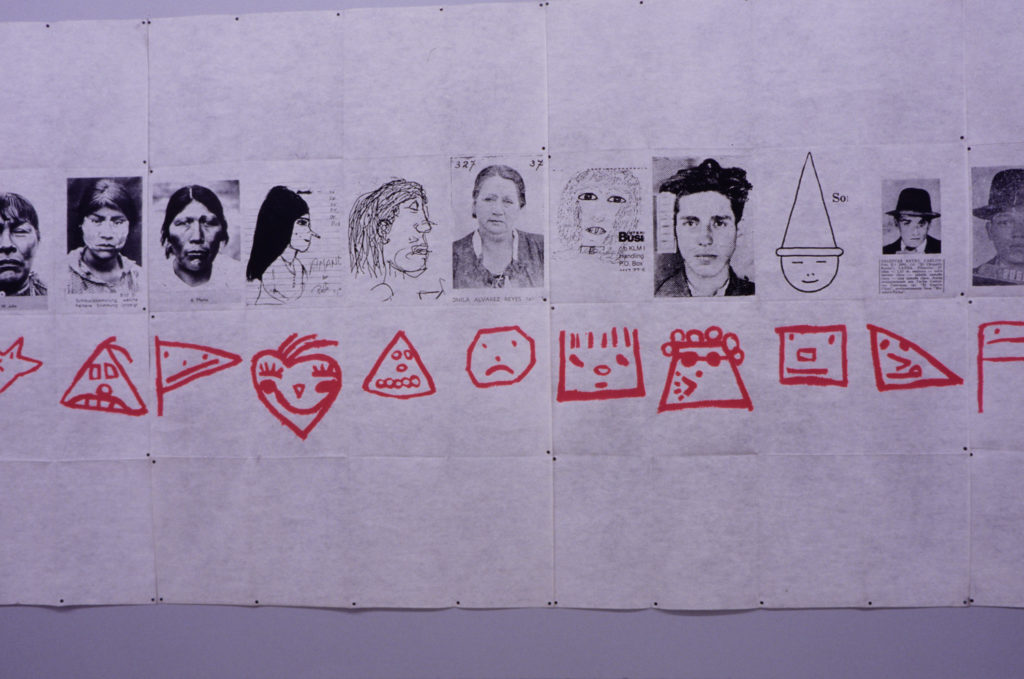CURATOR Guy Brett ORGANISER Institute of Contemporary Art, London OTHER VENUES Institute of Contemporary Art, 15 April–30 May 1993; John Hansard Gallery, Southampton, 17 August–18 September 1993 SPONSOR Ministry of Foreign Affairs of Chile, Embassy of Chile PUBLICATION publishers Institute of Contemporary Art; With de With, Rotterdam; essays Guy Brett, Kate Bush
When is a painting not a painting? When it’s a letter. Chilean artist Eugenio Dittborn has a clever way of getting his paintings out of the country—he mails them.
During the repressive years of the Pinochet dictatorship, an avantgarde (or ‘avanzada’) flourishes in Chile. As part of this movement, in 1984, Dittborn begins making Airmail Paintings. He prints, paints, sews, embroiders, and patches images onto large sheets of white fabric. He folds the sheets, places them in specifically designed reusable envelopes, and posts them to galleries around the world. Displayed alongside the paintings, the envelopes provide information about the paintings’ journeys—their itineraries. The Airmail Paintings are a strategy for tackling cultural marginalisation and cultural repression.
Dittborn uses oblique but suggestive images to dodge censorship. For instance, by juxtaposing faces drawn by psychiatric patients and by children with criminal mugshots and anthropological studies of colonised native peoples, he suggests people’s ‘disappearance’ during the military regime.
Forty envelopes carrying seven paintings travel from Rotterdam, via London, to City Gallery. Dittborn, arriving from Chile himself, unpacks the works.
The Airmail Paintings draw attention to the enormity of space between there and here, between the artist and us. Their travelling, he says, is ‘the political element of my work’. The Paintings’ images also suggest travel, from different times, places, and contexts. For instance, To Travel (1990), features images of the 1450-year-old body of an Inca boy, the El Plomo Mummy, and the remains of John Torrington, an English sailor who died in an exploratory expedition and remained frozen for 130 years near the North Pole.
In Time Out, Adrian Searle writes: ‘There’s a real poetry here, a sophistication, complexity, and simplicity few contemporary artists have achieved. It’s about time we recognised Dittborn as the most important Latin American artist of the latter part of the century.'

































